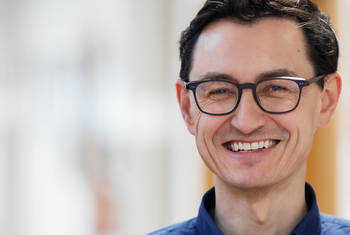Yan Ma How Can We Reduce CO₂ Emissions from Steel Production?
Yan Ma is group leader of ‘Sustainable Synthesis of Materials’ and deputy group leader of ‘Mechanism Based Alloy Design’ at the Max-Planck-Institut für Eisenforschung. He has previously been a researcher at RWTH Aachen University where he completed his doctorate (2019). His main research interests include sustainable metallurgy and materials, the application of synchrotron radiation in materials science and atom probe tomography. Yan Ma received the German Research Foundation’s Walter Benjamin Grant in 2021 and the DGM Prize for Young Talent 2021 awarded by the German Materials Society.
Area of Research
Materials Science
since 2021
Group Leader- Sustainable Synthesis of Materials
Max Planck Society (more details)
Max-Planck-Institut für Eisenforschung
since 2020
Deputy Group Leader- Mechanism-based Alloy Design
Max Planck Society (more details)
Max-Planck-Institut für Eisenforschung
2020-2021
2016-2019
Scientific Staff at Steel Institute
RTWH Aachen University
2016-2019
Doctor of Engineering
RTWH Aachen University
2013-2015
Master of Science in Metallurgical Engineering
RTWH Aachen University
2009-2013
Bachelor of Science in Engineering
University of Science and Technology Bejing
 © Maximilian Dörrbecker
© Maximilian Dörrbecker
Max Planck Society
"The Max Planck Society is Germany's most successful research organization. Since its establishment in 1948, no fewer than 18 Nobel laureates have emerged from the ranks of its scientists, putting it on a par with the best and most prestigious research institutions worldwide. The more than 15,000 publications each year in internationally renowned scientific journals are proof of the outstanding research work conducted at Max Planck Institutes – and many of those articles are among the most-cited publications in the relevant field." (Source)
Institute
Max-Planck-Institut für Eisenforschung
The international team of the Max-Planck-Institut für Eisenforschung conducts advanced basic materials research related to the fields of mobility, energy, infrastructure, medicine and digitalisation. We focus on nanostructured metallic materials as well as semiconductors and analyse down to their atomic and electronic scales. This enables us to develop new, tailor-made structural and functional materials embracing their synthesis and processing, characterization and properties, as well as their response in engineering components exposed to real operating environments.
The dynamic structure of the institute and the very intensive cooperation between the departments and researcher teams worldwide are ideally suited to provide answers to the currently emerging global issues of CO2-reduced and sustainable production and manufacturing, the complete conversion of energy supply and automotive drive technology, the synergies between machine learning and materials research and production, and the need for new high-performance materials for safety, weight-reduced transport and functional innovations based on excellent basic research.
Map
Steel is the backbone of our civilization, but it is also the largest single cause of global warming, through its massive greenhouse gas emissions (about 7% of all global CO₂ emissions). YAN MA introduces here a novel approach to deploy intermittent renewable energy in the form of green ammonia and use it for an unprecedented ironmaking process, i.e., ammonia-based direct reduction. Bypassing ammonia cracking (splitting it into hydrogen and nitrogen), the research demonstrates how using ammonia to produce direct reduced iron brings significant and heretofore unrecognized advantages. This novel approach sheds light on future sustainable ironmaking. Further work will look to vary different aspects of the process so that it can be used on an industrial scale.
LT Video Publication DOI: https://doi.org/10.21036/LTPUB101086
Reducing iron oxide with ammonia: A sustainable path to green steel.
- Yan Ma, Jae Wung Bae, Se-Ho Kim, Matic Jovičević-Klug, Kejiang Li, Dirk Vogel and et al.
- Advanced Science
- Published in 2023








